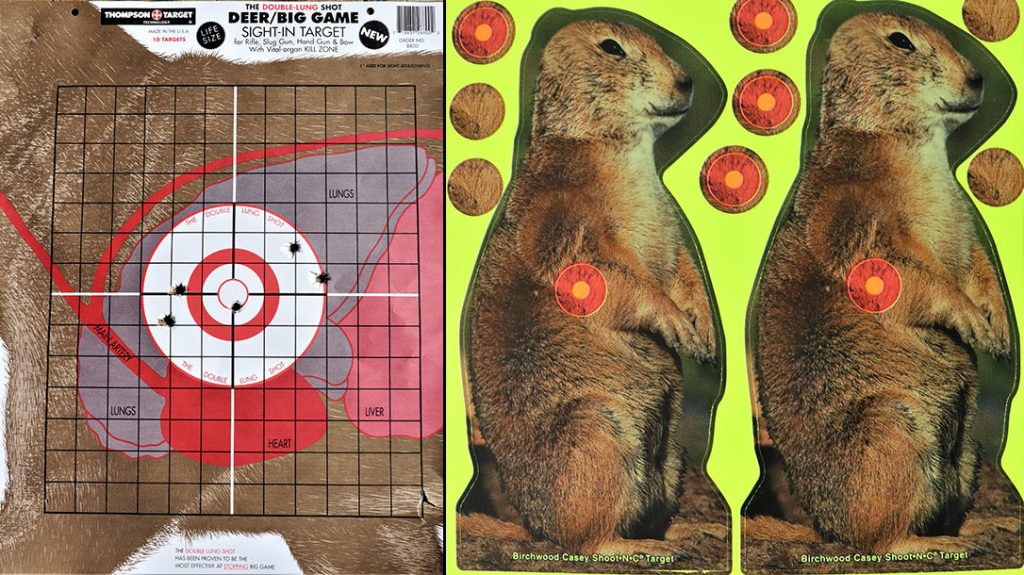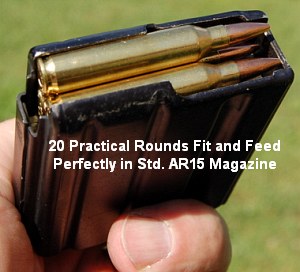We’ve all met people who are eager to share their knowledge about the best cartridge, handgun or ammo. Have you ever heard anyone praise the virtues “the best” paper target for shooting? In the 60 years or so that I’ve shot, I can count on one hand the number of times I’ve seen this.
Are paper targets an important aspect of shooting?
Targets are often considered the least important part of shooting, except for matches requiring specific paper targets such as IDPA or bullseye.
The majority of us focus on shooting in small groups, no matter what the target looks. This type of thinking led to “Center Mass” silhouettes. Unfortunately, the human center of mass is located just above the spleen.
A wound in this region is serious and could be fatal. It’s not likely to cause immediate incapacitation. Target practice and tactical training do not require that every shot be placed in the center of the target. It’s about placing shots where they are most effective.
Getting Started
It’s possible to learn how to do it. It doesn’t mean that you can’t start with bullseye targets or other targets with scoring rings. The good old bullseye can be very useful when sighting in new guns and developing basic skills.
All new shooters must build competence. Scoring rings or zones on targets are a great way to track a shooter’s progress in acquiring shooting skills such as sight picture, grip and trigger press.
As the shooter’s scores increase, so does their confidence. This is crucial for handguns used for self-defense or hunting.
The first step in developing firearms competency is to have the shooter stand 5 to 7 yards away from the target. As the trainee advances, he or she will be able to move further away. It is possible to see the grouping of the shots at the same time.
A “correction target” like Thompson Targets “Group Shooter”, which shows the difference between the point of aim and the center of the group, can be very useful. It will indicate any problems with aim, grip or trigger press, so that the appropriate corrections can made.
After a shooter has demonstrated competence at the distance they believe they will be shooting from, it is time for handgun hunters to move onto targets that require more specific skills.
Targets with Multiple Aiming points
The IQ target by RE Factor Tactical, for example, has multiple aiming points. These targets help shooters to see the entire target, rather than focusing on the center.
The IQ target is made up of squares and triangles randomly numbered 1-3, or randomly labeled with A, B, and C. Additionally, the squares and triangles are randomly colored in blue, green yellow, red or white. The target does not follow a pattern in terms of how the shapes, colors, numbers, letters or letters are displayed. This increases the difficulty level.
I start shooting this target with the gun pointed low at the berm and my trigger finger off the trigger. I then say to myself “Shoot every triangle” or “Shoot green number 3 targets”, etc. When my Competition Electronics shot-timer gives the start signal, I open my eye and engage the target.
It’s not quite as easy as you think. John Holschen, a nationally recognized trainer, has used this type target to train shooters how to hit moving targets. A word of caution: ask the Rangemaster whether the range is designed to accommodate targets with multiple aiming point.
Tactical Targets
The targets available today can be used in a three-step method of training for self-defense. Step one is an silhouette target with different colored and valued scoring areas. This makes it easier to determine where to place shots to increase the likelihood of incapacitation.
It’s always best to start close to the target, and then slowly move backwards to get a feel for the trajectory of your ammunition. Especially when using a large format gun like those based off of AR, AK or sub-machinegun platforms. These pistols often have a 3-inch difference between the line-of-sight and the line that the bore is on.
Photographic Targets
After becoming familiarized with shooting silhouettes the shooter can move on to photographic targets. There are two types. There are two types. The first has scoring zones that are lightly drawn, and the other has no scoring zones at all.
As I have had a lot of training, I prefer to use targets that don’t have any scoring zones. This requires me visualize and rely upon anatomical landmarks in order to locate the vital areas.
The use of photographic targets opens up a new level of skill development. They usually have at least one armed person presenting a danger. These targets can become more complex and difficult to hit.
The attacker in the target may be in a bladed position or partially obscured by concealment or cover. You need to visualize carefully. You may find that the armed offender has a partner. Which one should you shoot first? Which one is closer, the guy with a pistol or the guy with a shotgun?
What about the would-be killer who has a gun aimed at an innocent person and his finger on the trigger? What if the target is partially obscured by a no-shoot? There’s also the target that shows an armed attacker who is partially hidden behind cover.
There are also a variety targets that depict situations where the shooter in self-defense will need to use good judgment. If the trainee has access action bays that have side berms, like those at Flagler Gun Clubs, they can use movable targets frames and stackable barrels to combine multiple obstacles and targets, creating complex tactical challenges.
Use a shot-timer to create an urgency. Paper targets are the closest you can get to a force-on-force scenario.
Hunt/Survive targets
For those who hunt for recreational or subsistence/survival reasons, there are many targets to choose from in order to improve their skills at taking North American small and big game.
There aren’t nearly as many articles about hunting with handguns and long-distance shooting as there used to be when Bob Milek and Steve Herrett were alive. Some gun magazines do publish handgun hunting columns and articles. There are still handgunners that hunt with their handguns, and shoot metallic silhouette matches.
There are also hunters and hikers who carry large bore or magnum pistols loaded with deep-penetrating ammo, and/or snake loads, when they’re out in the woods and swamps.
I have a complaint about paper targets that depict game animals. Many of them have either scoring zones, or aim points, printed on the front. I would prefer to see the scoring zones on the back. Because hunting animals rarely allow for broadside shots.
Visualizing Vitals
It’s therefore important to practice on game targets and develop the ability to visualize where vitals are located from different angles. The “ball” method is one of the best I’ve seen.
Imagine the vital areas like a ball inside the chest cavity. Be sure to match the size of your ball with the size of game you are hunting. Then, fire your shot through the middle of the ball. If you are hunting reptiles on the other hand the ball will be very small, and located just behind the eye.
Aiming for the shoulder furthest away from you is another method of hunting four-legged mammal. A shot to the far shoulder will usually pass through the vitals. Then, it works to limit the animal’s mobility. This is particularly useful for quartering shots by hunters who use bullets such as semi-wadcutters or other bullets with a deep penetration.
The hunter should use a front target without scoring zones, regardless of the bullet type. It forces the hunter use anatomical landmarks to aim. There are no X rings on game animals, as much as we would like them to be.
Respect the Paper
The targets are much more than just something to punch holes in. They are valuable educational tools to maintain perishable shooting abilities, sharpen those skills, and develop new ones.
Due to the current rate of inflation, many of us will not have the disposable income necessary to purchase 500-1,000 rounds and pay up $2,000 in travel and fees for regular shooting school attendance.
We can preserve our skills from professional trainers by using paper targets that represent hunting or tactical situations. We can also develop new skills to deal with the potential threats that may exist within the communities in which we live and work.
For more information, please visit ActionTarget.com, BirchwoodCasey.com, ChampionTarget.com, RefactorTactical.com, and ThompsonTarget.com.
This article was originally published by Combat Handguns in issue July/August 2022. Subscription is available in print and digital editions at OutdoorGroupStore.com. Or call 1-800-284-5668, or email [email protected].
Continue Reading
You didn’t find the information you were looking for
Search Engine
The post Shred It! Shooting paper targets provides important feedback appeared first on Personal Defense World.

















